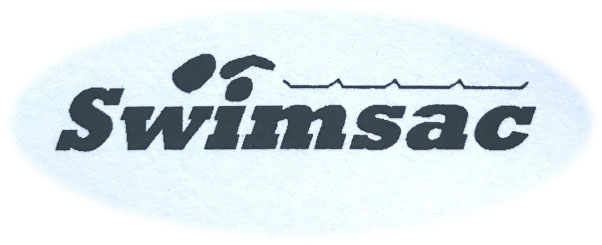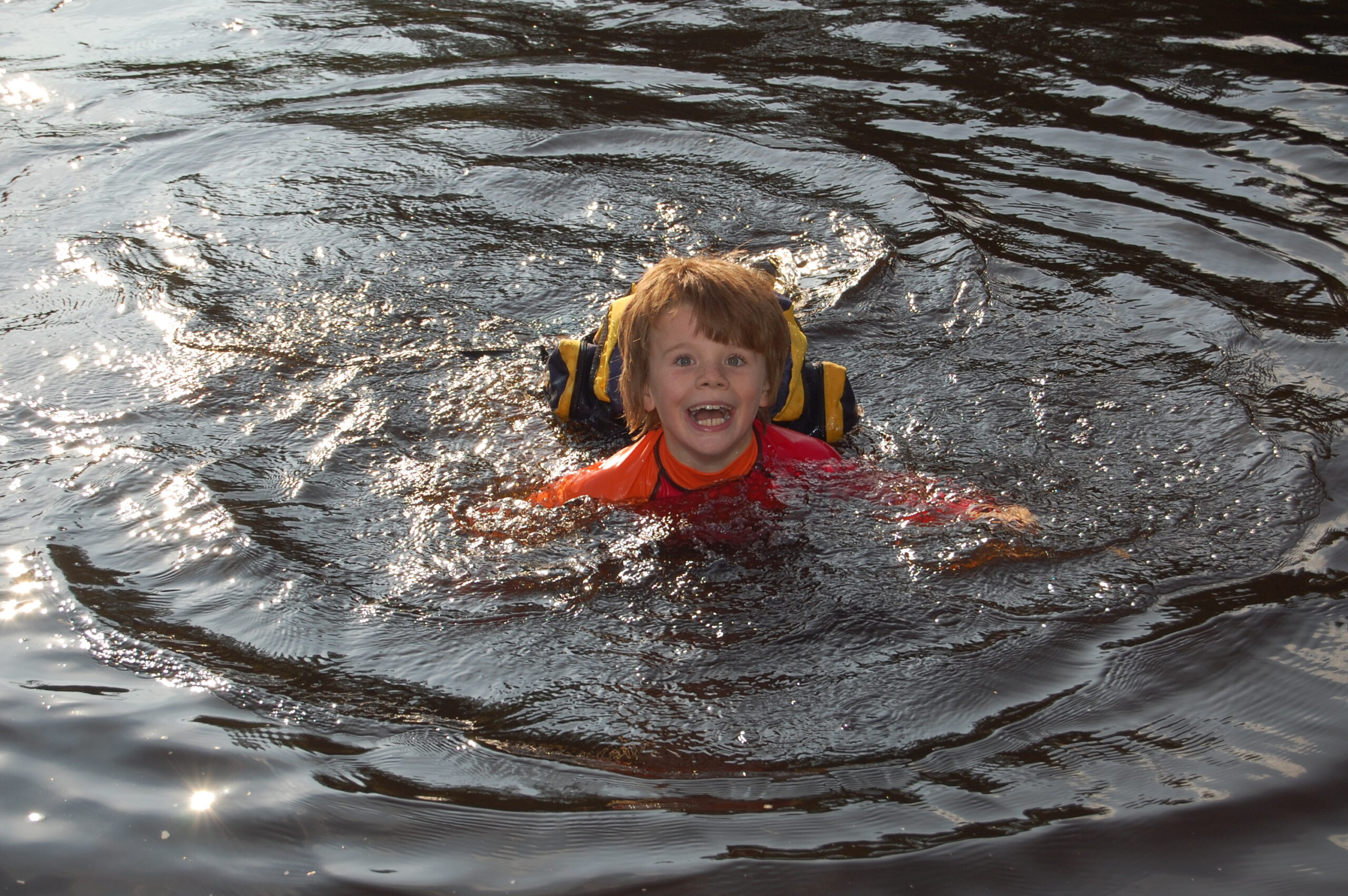
Children love the excitement of a swimhike.
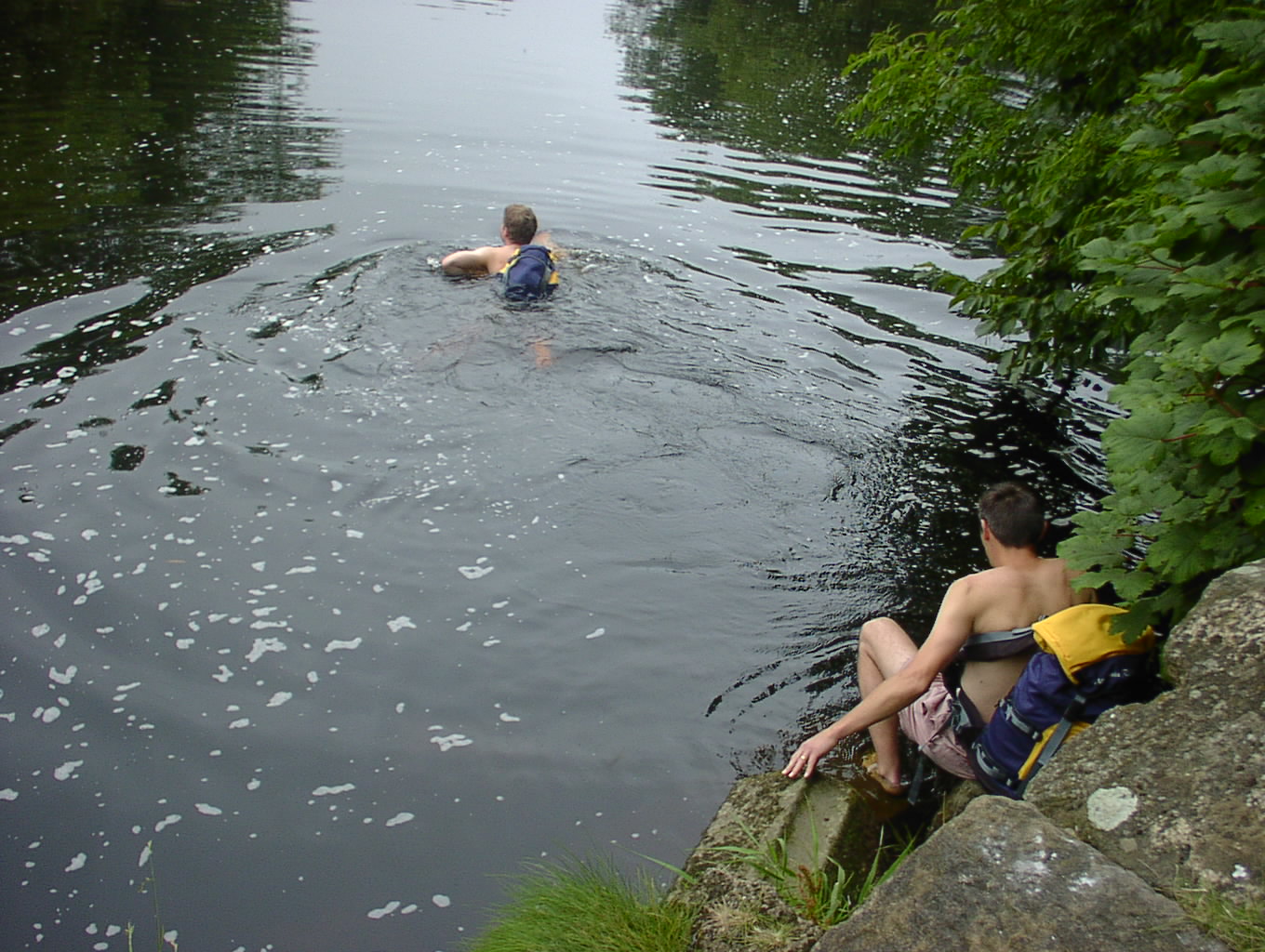
For anyone who enjoys regular hiking or swimming, combining them is ideal.
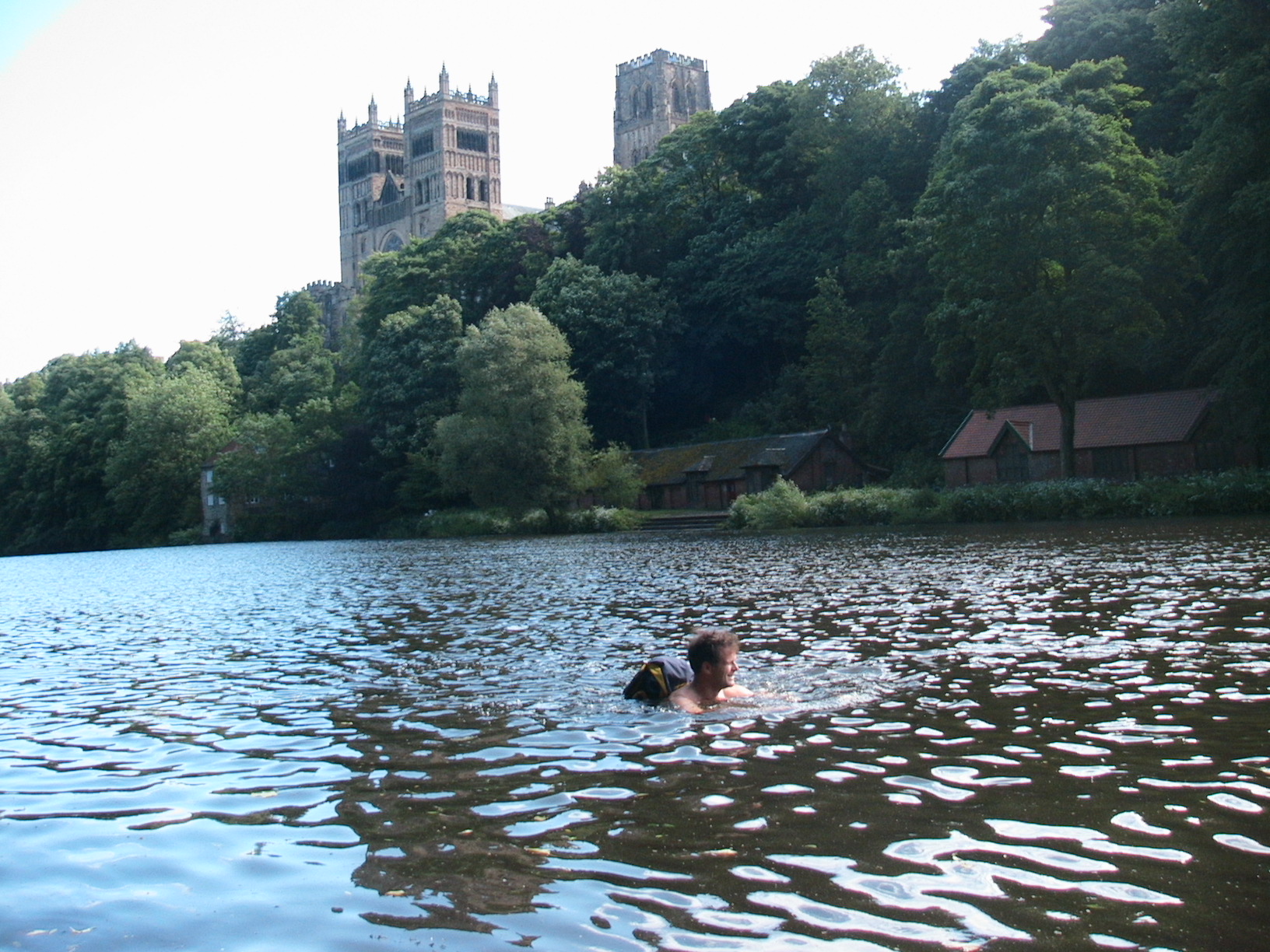
Wherever you are in the world, somewhere nearby is a swimhike waiting to be discovered!
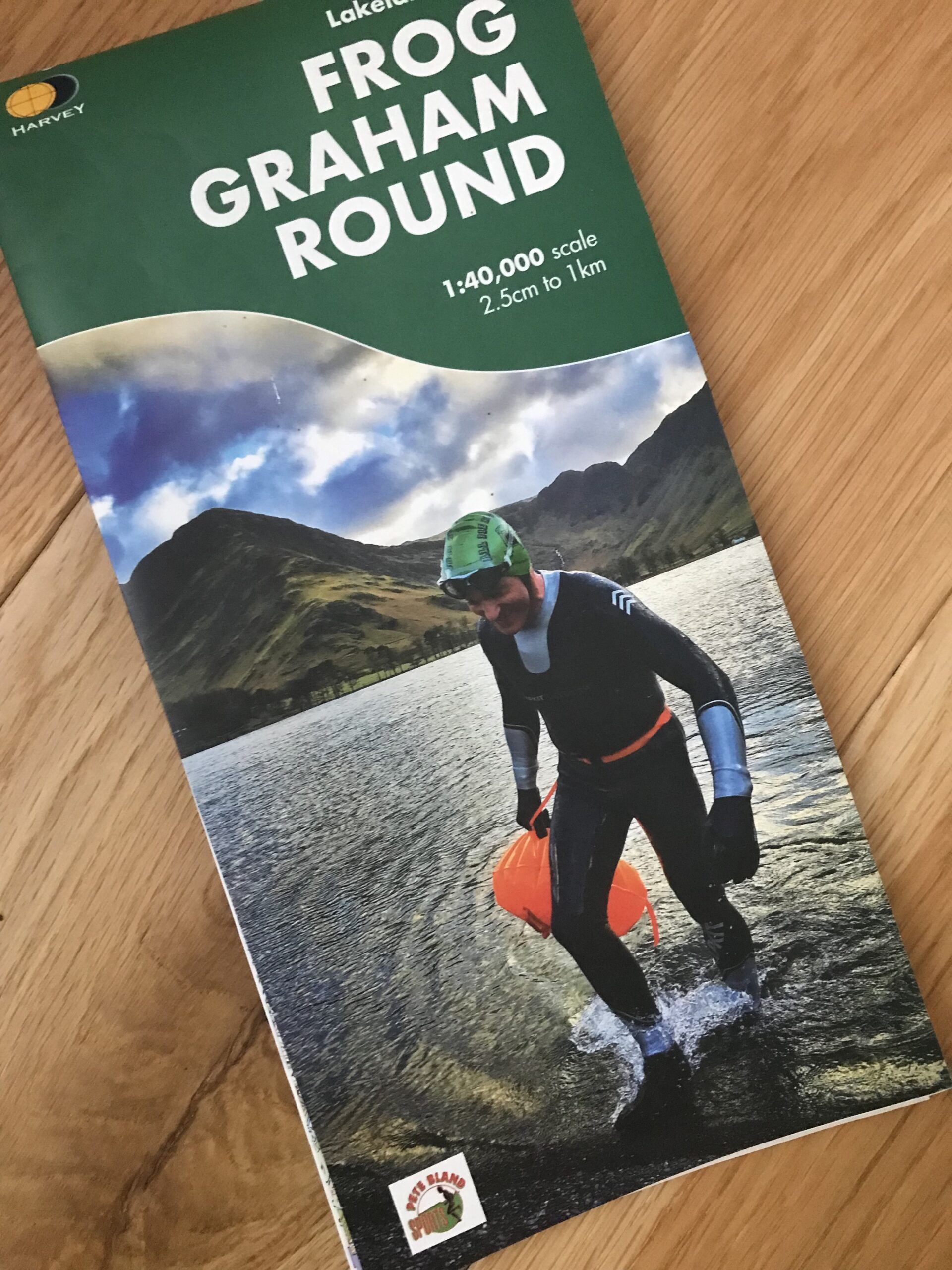
Are great for anyone who wants to push themselves (but please be careful).
Switching from land to water and back feels cool!
Swim from place to place and keep right on going!
Obviously.
It’s so low tech you can make your own gear from recycled bits of kit!
Many years ago, I left my clothes on the beach in a rucksack and headed out to sea for a long swim. When I came back, the rucksack had gone. The police had removed it after it had been reported that I had committed suicide. To avoid incidents like this, I created a swimsac to carry my clothes, and so discovered–as it were by accident–that simply because I had my stuff with me, I could suddenly follow all these fantastic new routes. So I started swimhiking, and have never looked back…
When swimhiking, I can be so determined to get the route done that I get obsessed and realise—too late—that I have gone through a most wonderful area and barely noticed it. To fight against this bad habit, I try and pause en route to take in some of my surroundings. And afterwards, to better appreciate the infinite beauty of the natural world, I try and paint some of these places.
Is swimhiking a sport, a hobby, or an artform? It is a bit of all three. Like a sport it demands a level of fitness, and challenge routes can have a competitive element. Like any good hobby it is at once relaxing and stimulating. But if I had to choose, I think it is best described as an artform. One of the simplest modes of art is the line, and some human lines through nature are undoubtedly works of art: think of Hadrian’s wall, brilliantly connecting natural ridge lines, and then look at dry stone walls and not only the craft of their construction but how they are sinuously adapted the lay of the land. A swimhiking route is also a line over the landscape, albeit one that leaves no trace, and in trying to trace a natural route, you are creating art.
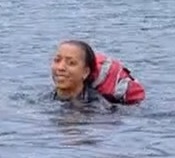
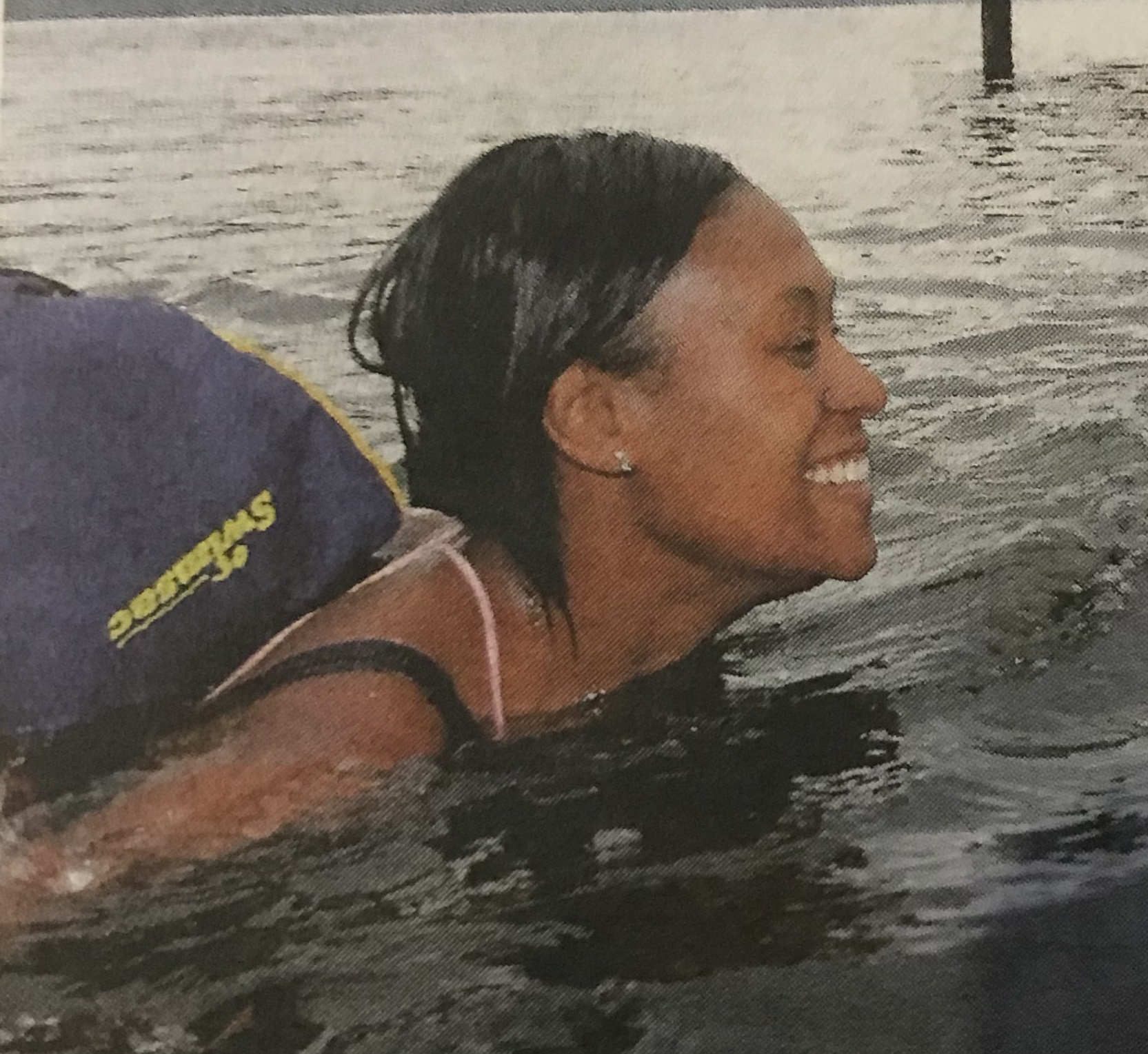

I think you should make one, but I know that few people can be bothered, so both making and buying a swimsac are covered.
1. Find a rucksack with a (i) drawstring (ii) side pockets (iii) sternum strap (iv) waist strap.
2. Tear out any soft foam padding.
3. Buy a good quality roll top drybag to use as an inner bag.
4. Put a single child’s armband in each side pocket for balance.
5. You’re ready to go.
Take a swimhike where the route allows you to swim in calm shallow water close to the shore. Ideally, try mixing walking and swimming along a lakeshore path.
The main commercial swimsac design is a float bag, like a drybag, with added straps. In the water you drag the bag behind you attached by a cord. There are several versions on the market. (The photo shows the Alpkit version, which works perfectly well.) You can also get something akin to a small rubber dinghy, strap your rucksack to it, and pull it along.
Take your shoes (an extra bag helps), a towel, your clothes, a map, a sandwich – whatever you would take on a hike and can fit in.
As soon as you are used to your swimsac in the water you can swimhike with it anywhere. Some ideas for where you could go are found in swimhiking guides to the Lakes and North East, and Britain and Europe.
